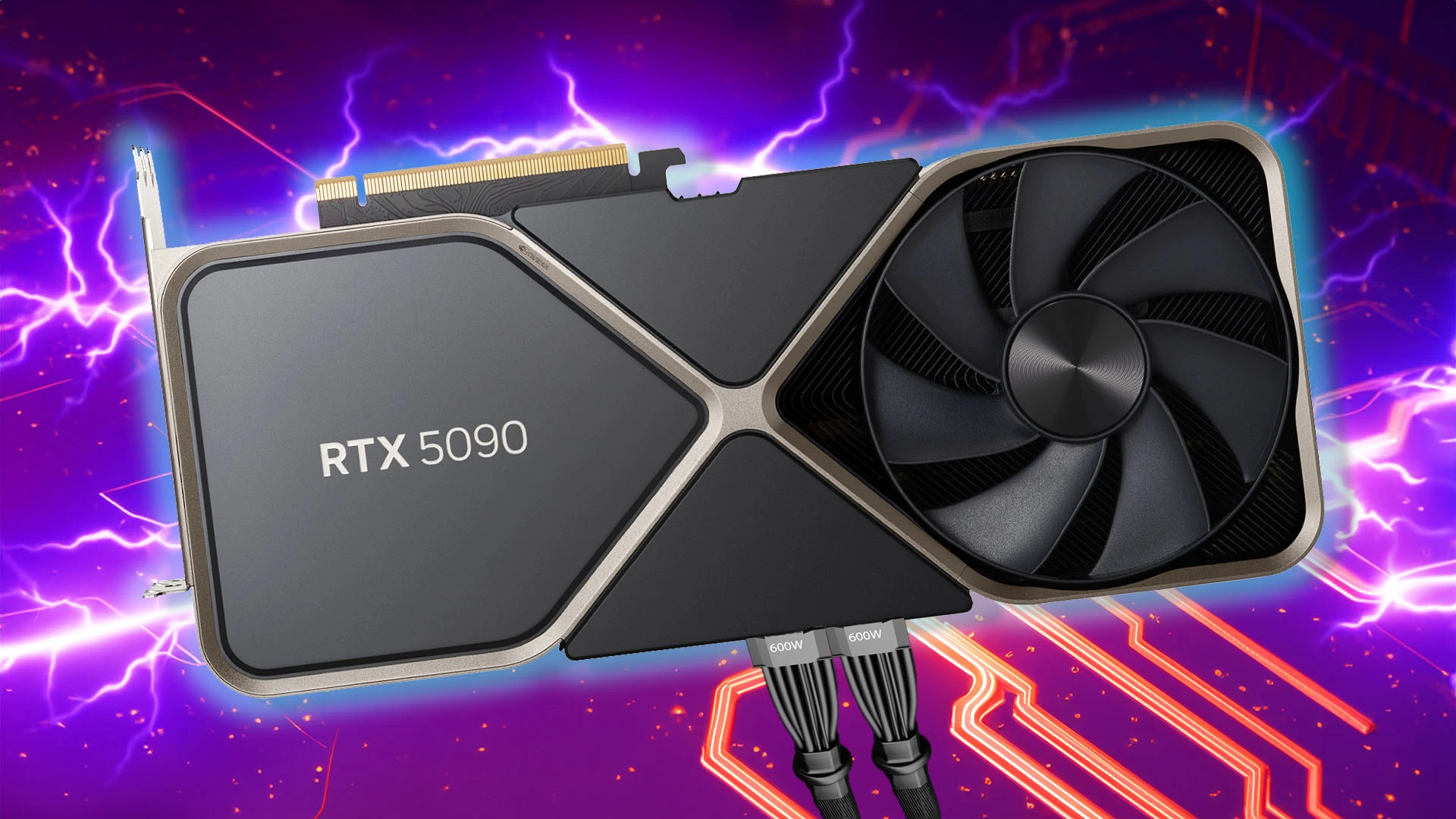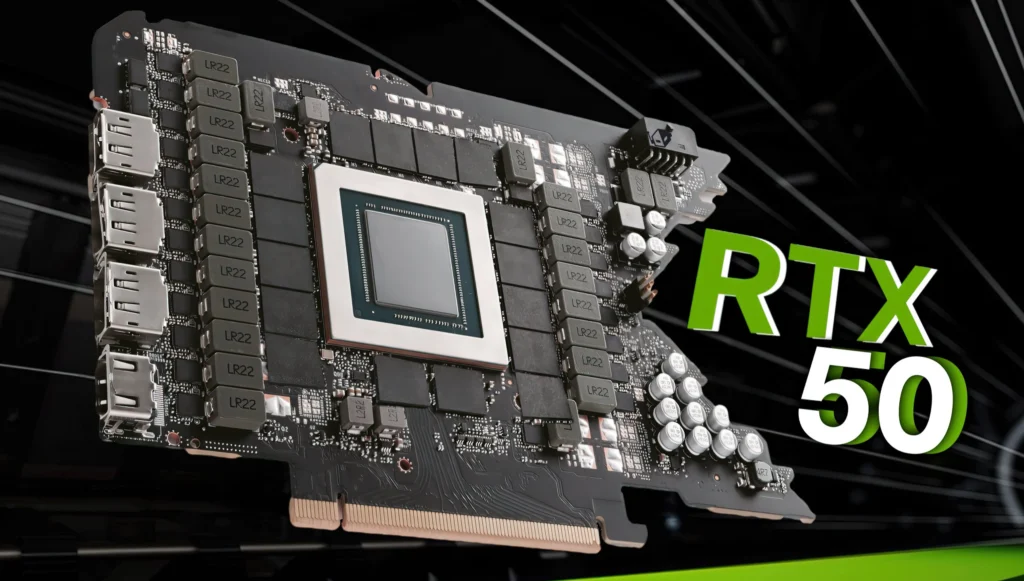
NVIDIA GeForce RTX 5090: Specs, Performance, Price & Release Date – Everything You Need to Know
NVIDIA’s GeForce RTX 5090 is slated to be Team Green’s flagship offering in the RTX 50 “Blackwell” GPU lineup, bringing performance levels deemed impossible. Here’s everything you need to know about the upcoming GPU, including specs, price, and performance.
NVIDIA’s GeForce RTX 5090 – Ushering A New Era In Graphical Capabilities Through Cutting-Edge “Blackwell” Architecture
Well, regardless of how well-decorated a GPU lineup is, it is only the “flagship” entrant that acts as the cherry on top, often allowing experts to conclude on the overall capabilities of a GPU lineup. This is why NVIDIA needs to nail the release of their next-gen flagship GPU, the GeForce RTX 5090, and based on what we have seen till now, Team Green is poised to maintain the market lead when it comes to introducing a GPU that can offer the highest level of performance, which the industry has never seen.
It won’t be wrong to see that NVIDIA is in pursuit of redemption from the “consumer GPU” markets, given that with the AI hype kicking in, many enthusiasts are starting to believe that Team Green is turning out to be an “AI-dominant” firm, and with this narrative building upon, we are certain that the showcase of NVIDIA’s GeForce RTX 5090 will put such rumors to an end. Initial impressions show us that NVIDIA is prepping the GPU to be the “fastest out-of-box” product available in the markets, and while rivals like AMD have given up on the “enthusiast” race, it seems like NVIDIA is committed and dominating, too.

The “RTX” bandwagon, which started with the Turing architecture and took a new high with Ada Lovelace, is now taking a shape that is beyond imaginable, and with NVIDIA’s Blackwell, consumers can expect performance figures that will likely show us why NVIDIA is the boss here. The Blackwell series, in general, is rumored to be NVIDIA’s “holy grail” for the consumer segment, and the specifications rundown, which we will discuss next, will clearly conclude why the RTX 50 series is such a huge thing for the markets.
GeForce RTX 5090 Specifications – Combining Overkill, Quality & Stability In One Package
Moving onto the crux, we have seen a detailed timeline of the rumored specifications of NVIDIA’s GeForce RTX 5090, particularly when it comes to the onboard PCB package and silicon. However, in recent times, given that we are approaching the period in which NVIDIA unveils its next-gen GPUs, the rumor mill has started to revolve pretty quickly, giving us crucial details of what to expect with NVIDIA’s next-gen flagship product.
Starting with the specifications, NVIDIA’s GeForce RTX 5090 is said to feature the PG144/145-SKU30 PCB design, which will house the “heart of the GPU,” also called the GB202-300-A1 GPU core. The GPU is rumored to have 170 SMs enabled out of the total 192 SMs and will feature 21760 cores instead of the total 24,576 cores, marking an 11.4% reduction of the “total” power available onboard, which is slightly higher compared to the GeForce RTX 4090, which stood at 11.1%. The GB-silicon series is said to be a breakthrough in terms of GPU performance thresholds, and the following details are even more interesting.

Well, memory/VRAM is an area that is said to feature massive enhancements with the GeForce RTX 5090 since Team Green has decided to bump up the overall capacity to 32 GB of GDDR7 VRAM, running across a “behemoth” 512-bit interface, reaching overkill levels. Apart from this, the GPU will feature 28 Gbps operating speeds for up to 1792 GB/s of bandwidth, and when you compare this to the likes of GeForce RTX 4090, which features 21 Gbps speeds and 1008GB/s of bandwidth, it is evident that the generational gaps are wider than ever.
Given such components and capabilities onboard, it is only imminent for such as GPU to come with significantly higher TDPs, and this is the case with NVIDIA’s next-gen flagship GeForce RTX 5090 as well, which is rumored to feature a 600W TBP rating, and when compared against the GeForce RTX 4090, this marks a 150W+ increase, which is indeed a massive generational leap. Apart from this, NVIDIA is also expected to drop the troublesome 12VHPWR power connector for the 12V-2×6, with the latter one having the power to deliver 600W.
Here’s a quick summary of how Ada Lovelace and Blackwell’s respective flagship offerings will stack against each other:
| Specifications | GeForce RTX 5090 | GeForce RTX 4090 |
|---|---|---|
| Architecture | Blackwell | Ada Lovelace |
| Process Node | 4NP(TSMC’s 5nm) | 4N(TSMC’s 5nm) |
| GPU | Blackwell GB202-300 | Ada Lovelace AD102-300 |
| Cuda Cores | 21760 | 16384 |
| SM | 170 | 128 |
| Tensor Cores | TBD | 512 |
| RT Cores | TBD | 128 |
| Clock Speed(Base/Boost) | 2900/TBD Mhz | 2235/2520 MHz |
| VRAM Size and Type | 32 GB GDDR7 | 24 GB GDDR6X |
| Memory Speed | 28 Gbps | 21 Gbps |
| Memory Bus Width | 512-bit | 384 bit |
| Memory Bandwidth | 1792 GB/s | 1008GB/s |
| TBP | 600W | 450 W |
| Power Connector | 1x 12V-2×6 (16-pin) | 1x 12VHPWR (16-pin) |
NVIDIA’s GeForce RTX 5090 – Expected Performance
Well, NVIDIA certainly does a great job in keeping details of its next-gen releases undercover; hence, for now, we don’t have much of an idea of what to expect with the GPU in terms of gaming performance, along with synthetic benchmarks. However, based on the initial specifications we have seen, NVIDIA’s GeForce RTX 5090 has seen a massive rise in the onboard VRAM capacity, along with the base clocks as well, which are rumored to be at 2900 MHz, marking a 30% bump from the GeForce RTX 4090.
Overall, one should expect a formidable performance difference between NVIDIA’s current and next-gen flagship GPUs, at least more than a 10%+ difference in favor of the Blackwell counterpart. Overkill gaming experiences won’t be difficult for NVIDIA’s GeForce RTX 5090 at all, and with enhanced technologies such as DisplayPort 2.1 onboard, you can certainly expect 4K and even 8K gaming to be seamless with the GPU, coupled with the upscaling technologies such as DLSS onboard, flagship users will surely get the best experience.
NVIDIA GeForce RTX 5090 Pricing
Like performance, we can’t always be certain about how NVIDIA will price out its RTX 50 Blackwell series GPUs, given that Team Green tends to make late decisions regarding the pricing of its SKUs to level against market competition. Given that NVIDIA’s GeForce RTX 4090 was released at an MSRP of $1,599, we can see the GeForce RTX 5090 seeing a price tag above this point, given the performance improvements brought onboard, along with costly components such as GDDR7.
A ballpark guess would be around $1,800-$2,000, but yet again, this is just an estimate for now, and the actual pricing hasn’t surfaced yet, so we can’t be very certain about it. For sure, NVIDIA’s GeForce RTX 5090 will be the holy grail of the RTX 50 Blackwell lineup; hence, anticipating a premium price tag is certainly right in this case.
NVIDIA GeForce GPU Segment/Tier Prices
| Graphics Segment | 2024 | 2023-2024 | 2022-2023 | 2021-2022 | 2020-2021 | 2019-2020 | 2018-2019 | 2017-2018 |
|---|---|---|---|---|---|---|---|---|
| Titan Tier | GeForce RTX 5090 | GeForce RTX 4090 | GeForce RTX 4090 | GeForce RTX 3090 Ti GeForce RTX 3090 | GeForce RTX 3090 | Titan RTX (Turing) | Titan V (Volta) | Titan Xp (Pascal) |
| Price | TBD | $1599 US | $1599 US | $1999 US $1499 US | $1499 US | $2499 US | $2999 US | $1199 US |
| Ultra Enthusiast Tier | GeForce RTX 5080 | GeForce RTX 4080 SUPER | GeForce RTX 4080 | GeForce RTX 3080 Ti | GeForce RTX 3080 Ti | GeForce RTX 2080 Ti | GeForce RTX 2080 Ti | GeForce GTX 1080 Ti |
| Price | TBD | $999 US | $1199 US | $1199 US | $1199 US | $999 US | $999 US | $699 US |
| Enthusiast Tier | GeForce RTX 5070 Ti? | GeForce RTX 4070 Ti SUPER | GeForce RTX 4070 Ti | GeForce RTX 3080 12 GB | GeForce RTX 3080 10 GB | GeForce RTX 2080 SUPER | GeForce RTX 2080 | GeForce GTX 1080 |
| Price | TBD | $799 US | $799 US | $799 US | $699 US | $699 US | $699 US | $549 US |
| High-End Tier | GeForce RTX 5070 | GeForce RTX 4070 SUPER GeForce RTX 4070 | GeForce RTX 4070 GeForce RTX 4060 Ti 16 GB | GeForce RTX 3070 Ti GeForce RTX 3070 | GeForce RTX 3070 Ti GeForce RTX 3070 | GeForce RTX 2070 SUPER | GeForce RTX 2070 | GeForce GTX 1070 |
| Price | TBD | $599 $549 | $599 US $499 US | $599 $499 | $599 $499 | $499 US | $499 US | $379 US |
| Mainstream Tier | GeForce RTX 5060 Ti | GeForce RTX 4060 Ti GeForce RTX 4060 | GeForce RTX 4060 Ti GeForce RTX 4060 | GeForce RTX 3060 Ti GeForce RTX 3060 12 GB | GeForce RTX 3060 Ti GeForce RTX 3060 12 GB | GeForce RTX 2060 SUPER GeForce RTX 2060 GeForce GTX 1660 Ti GeForce GTX 1660 SUPER GeForce GTX 1660 | GeForce GTX 1060 | GeForce GTX 1060 |
| Price | TBD | $449 $299 | $399 US $299 US | $399 US $329 US | $399 US $329 US | $399 US $349 US $279 US $229 US $219 US | $249 US | $249 US |
| Entry Tier | GeForce RTX 5060 | RTX 3050 8 GB RTX 3050 6 GB | RTX 3050 | RTX 3050 | GTX 1650 SUPER GTX 1650 | GTX 1650 SUPER GTX 1650 | GTX 1050 Ti GTX 1050 | GTX 1050 Ti GTX 1050 |
| Price | TBD | $229 $179 | $249 US | $249 US | $159 US $149 US | $159 US $149 US | $139 US $109 US | $139 US $109 US |
NVIDIA’s GeForce RTX 5090 – Release Date & Availability
NVIDIA’s RTX 50 Blackwell lineup is anticipated to be showcased at CES 2025, with high-end models such as the GeForce RTX 5090 and the GeForce RTX 5080 being involved in the initial showcase. However, supply is expected to be steady in the markets following the end of Q1-2025, given that on-launch demand is pretty high with NVIDIA’s GPU releases, especially for the flagship models.




This RTX 5090 sounds absolutely insane! The 32GB GDDR7 VRAM and 600W power rating are mind-blowing. I’m really excited to see how this compares to AMD’s next-gen GPUs. Great write-up, thanks for breaking it all down!
Does the RTX 5090 support DisplayPort 2.1 for 8K gaming? I’m building a high-end PC and want to future-proof it for a few years. Would love your thoughts!